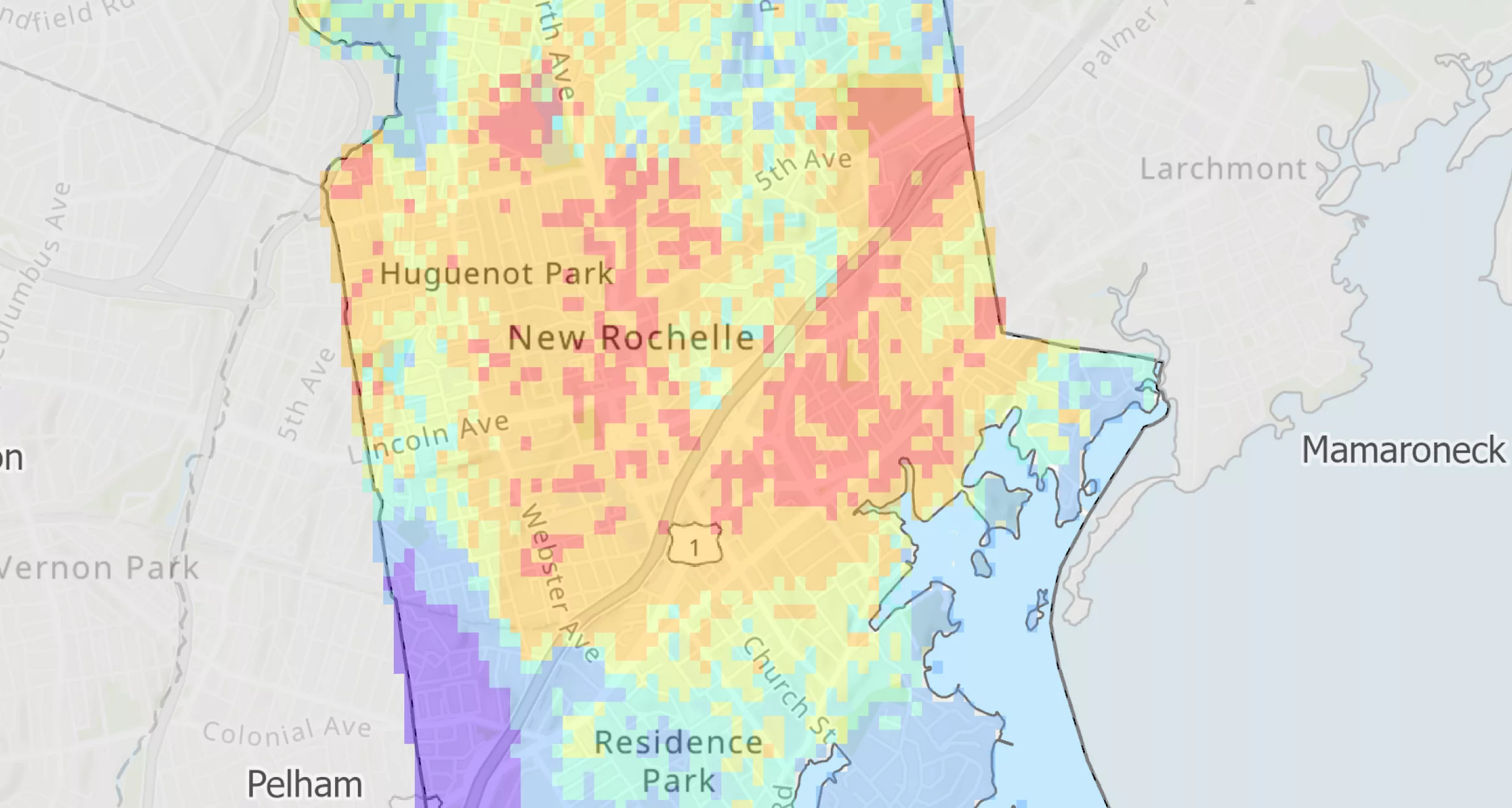Using data to optimize investments in the fight against the urban heat island effect
Extreme heat is the leading cause of climate change related death in the United States. It is more deadly than hurricanes, tornadoes, and flooding. And, as our planet warms, it is becoming more necessary to cool buildings and people.
Urban areas are especially vulnerable. Since buildings and roads absorb heat, cities can be up to 7°F warmer than natural areas. This adds to the heat island effect, which poses risks to human health and environment. It discourages physical activity, requires greater energy use for air conditioning, and elevates risks for heat-related illnesses.
Reducing heat’s impact on health starts with identifying the physical and social contributors.
Heat vulnerability is a function of three factors. They are: 1) exposure to heat at specific locations, 2) sensitivity characteristics of the population such as age and health status, and 3) adaptive capacity (ability to mitigate the stress).
Here is a formula to help visualize heat vulnerability.
Heat Vulnerability = Exposure + Sensitivity – Adaptive Capacity
What is the best way to evaluate vulnerability factors? Our team is using three smart city tools to help decision-makers create measurable public improvements to keep you cool.
Tech #1: Triple-bottom-line lifecycle cost assessment
Heat resilience tactics are diverse. Solutions include adding tree canopy, indoor cooling, shade structures, asphalt reduction, cooling centers, green infrastructure, and green roofs.
But finding the most effective mitigation options is difficult. Even more so when viewing all the costs and benefits for each. Triple-bottom-line and lifecycle cost assessments are two decision-support tools that help compare project outcomes. We analyze social, environmental, and economic impacts over the lifetime of a project.
A stand-alone framework for heat vulnerability mitigation would be costly. A better path is to include many benefits within a project. Examples include encompassing categories for greenhouse gas emissions, changes in abutting property value, stormwater management, and human health.
Strategies that have multiple benefits help earn support from communities, and they make the most out of limited budgets. Our approach to urban design is that it should be multifunctional. Designs should contribute to improved air and water quality, public health, water conservation, and carbon sequestration. As an example, right-of-way bioswales should maximize stormwater retention through plantings that can tolerate a variety of site-specific conditions. Community input during design can boost benefits even further.
Tech #2: remote sensing with ECOSTRESS
How hot? Where? And when? These are all questions answered by ECOSTRESS, a novel data source from NASA. Our team members have used the tool to look at previous extreme heat events and determine ground temperature in a study area.
This tool creates a clear picture of an area’s heat exposure characteristics. Combined with knowledge of heat sensitivity, we can start to make informed decisions on the most impactful investments for vulnerable populations.

Tech #3: Estimating adaptive capacity with location data
Adaptive capacity is a person’s ability to respond to extreme heat events. Avoiding the heat is harder for some people. They include those who cannot afford air conditioning or high electricity bills, have mobility issues that prevent them from going to a cooling center, or need to work outside.
People tend to spend much of their time inside buildings, especially in extreme heat. As such, it is important to identify neighborhoods with older buildings with lower thermal performance.
To estimate adaptive capacity, we identify residents living in poor-performing buildings during extreme heat using anonymized location data. These data allow us to understand travel patterns through choices made to stay or go to a cooling center, park, or other destination. We can then paint a fine-grained picture of vulnerability when combined with ECOSTRESS data from the same event.
With a map of adaptive capacity, we’ll have an estimate of which neighborhoods are accessing cooling centers, employment, medical facilities, and parks. These results are useful for ranking investments into new or updated facilities.
Optimizing impact and equity with evidence-based strategies
In the end, heat vulnerability is about protecting people and prioritizing those who need it most.
Experience shows that the usual method of infrastructure investment tends to benefit the loudest and most visible problems. We know this is not always where it would have the greatest impact.
Through data analysis, cities have the potential to optimize heat mitigation investments for the greatest impact. The end result? The ability to improve human health, equity, sustainability, and economic feasibility.
